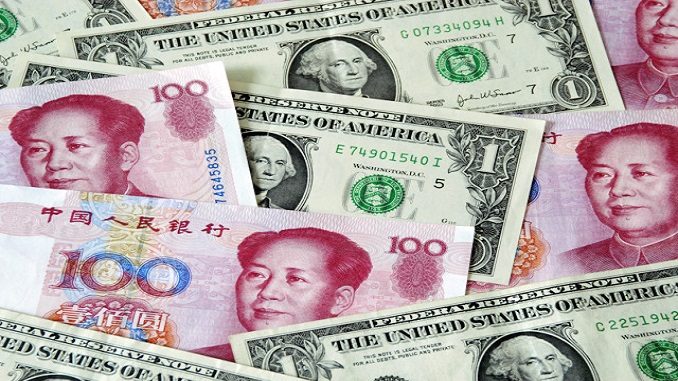
Increased foreign investment into Chinese markets could boost the usage of the yuan, pushing it to become the third largest reserve currency in the world — behind only the U.S. dollar and the euro, Morgan Stanley analysts predicted in a report distributed Friday, CNBC reported.
The forecast comes as the Chinese government has been trying for years to promote the international use of the yuan, also known as the renminbi (RMB).
Right now, the yuan accounts for about 2% of global foreign exchange reserve assets, the report pointed out. But it could rise to between 5% and 10% by 2030, surpassing the levels of the Japanese yen and British pound, the analysts said. The forecast reiterates one that the bank made in February 2019.
In the 18 months since, the Chinese government has stepped up its efforts to allow more foreign financial institutions into the domestic market. Overseas investors have also been increasingly turning to the Chinese market for the potential of relatively higher returns than that of other regions.
Investment portfolio inflows will become more important than foreign direct investment in the next decade, for a cumulative $3 trillion of inflows, Morgan Stanley predicted.
“We expect private and reserve managers will generate more than US$150 billion in total portfolio inflows to China in 2020, for the third consecutive year, highlighting the transformations underway. The annual inflow should reach US$200-300bn in 2021-30,” the report said.
With these investments, more global assets will be held in yuan, which has struggled to gain traction on an international level. The Chinese government has traditionally kept a tight grip on the currency, including preventing large amounts of capital from leaving the country.
However, in 2015 the International Monetary Fund made the politically significant move of adding the yuan to its basket of major reserve currencies — known as the special drawing rights basket. The yuan was added to the IMF’s basket in October 2016.
Morgan Stanley predicted the yuan will likely strengthen to 6.6 yuan versus the U.S. dollar by the end of 2021. The Chinese yuan traded near 6.85 yuan versus the dollar on Friday.
″(The 5% to 10% target) is not unrealistic in light of the financial market opening in China, the growing cross border capital market integration we see across equities and fixed income and an increasing proportion of China’s cross-border transactions being denominated in RMB,” Morgan Stanley international strategist James Lord said in the report. “All of this suggests global central banks will need to hold more RMB as part of their reserves.”
“As of end 2019, there are approximately 70 central banks around the world that hold RMB in their reserves, up from 60 at the end of 2018, according to the PBOC’s annual RMB internationalization reports,” Lord said, referring to the People’s Bank of China, the country’s central bank.

Be the first to comment